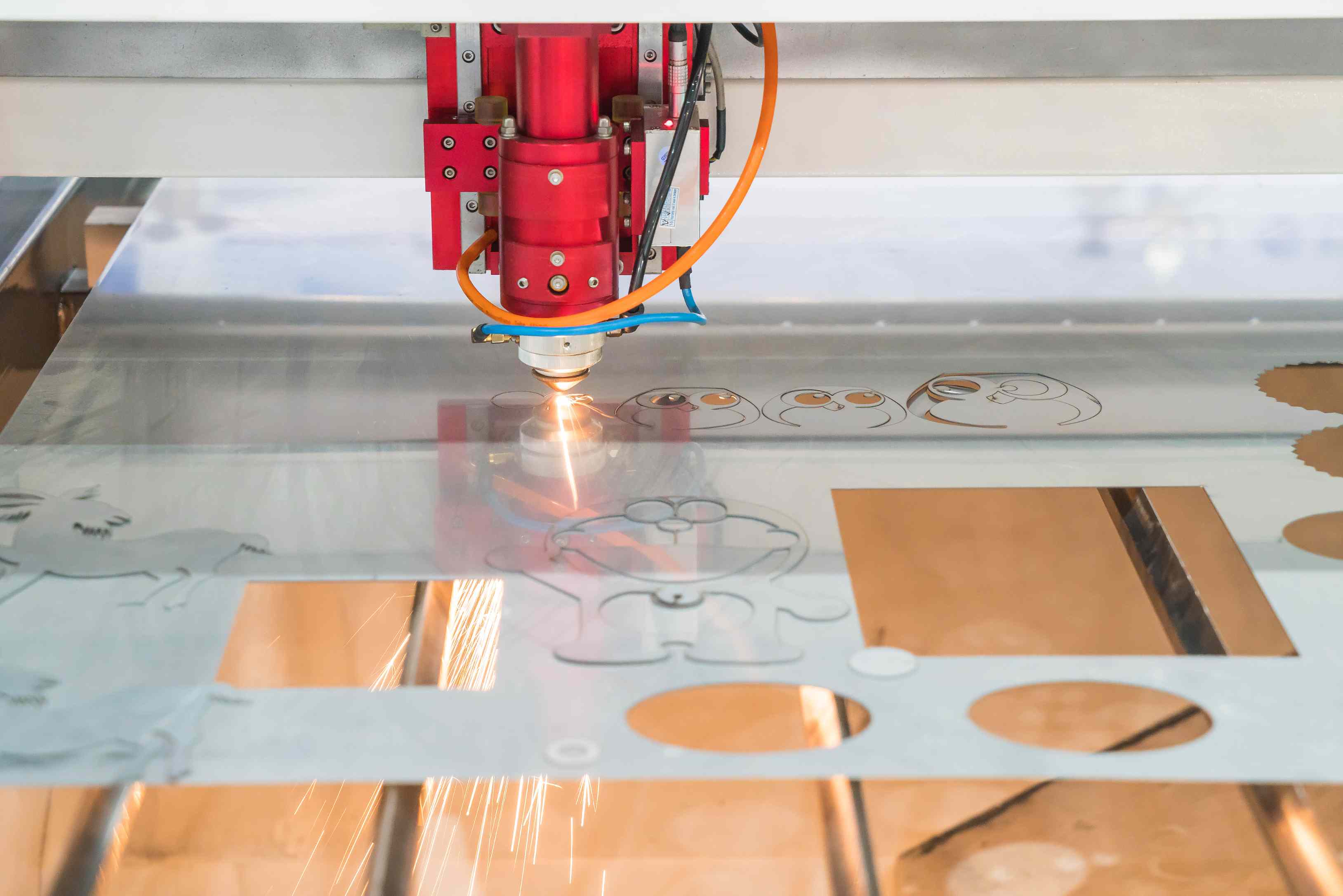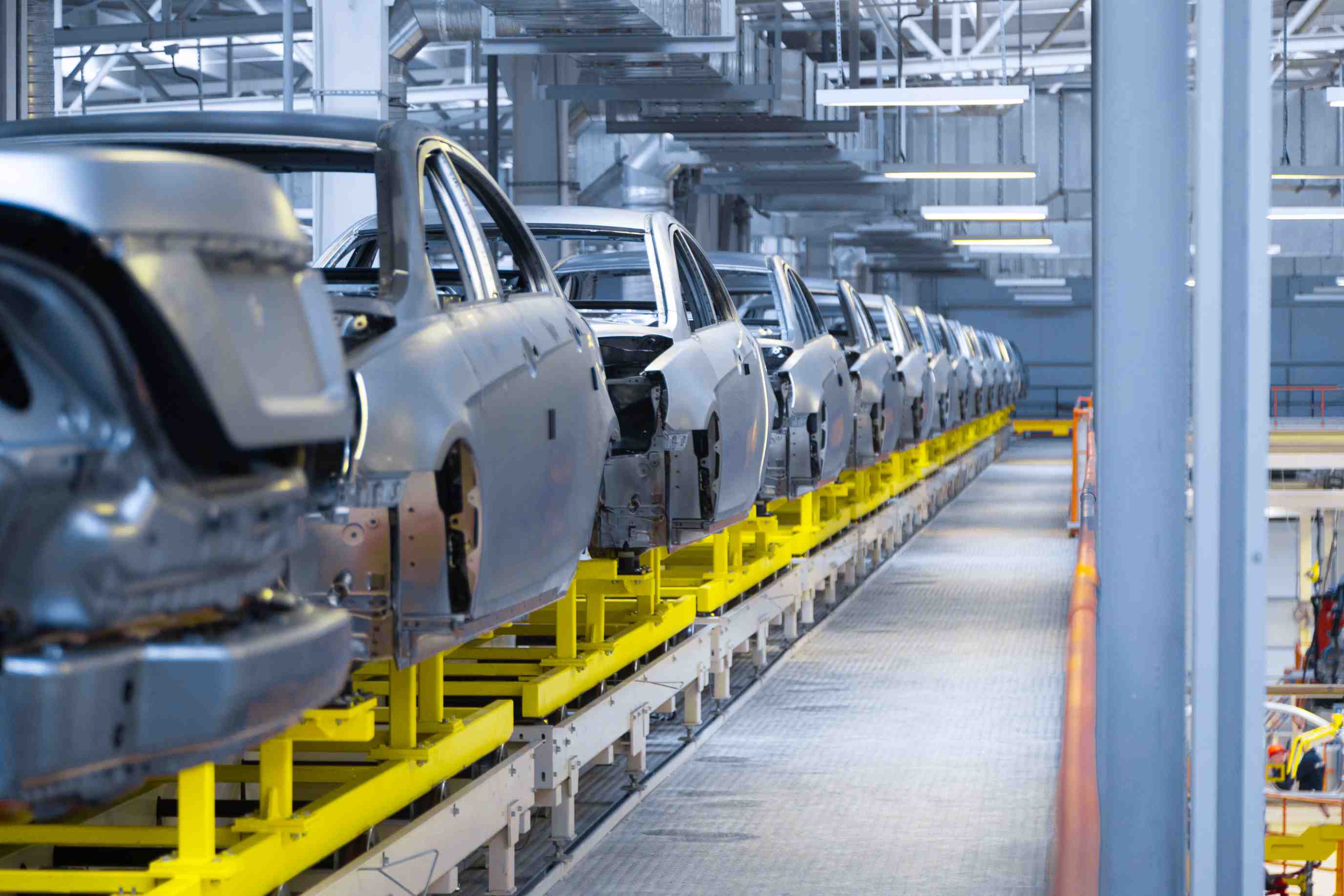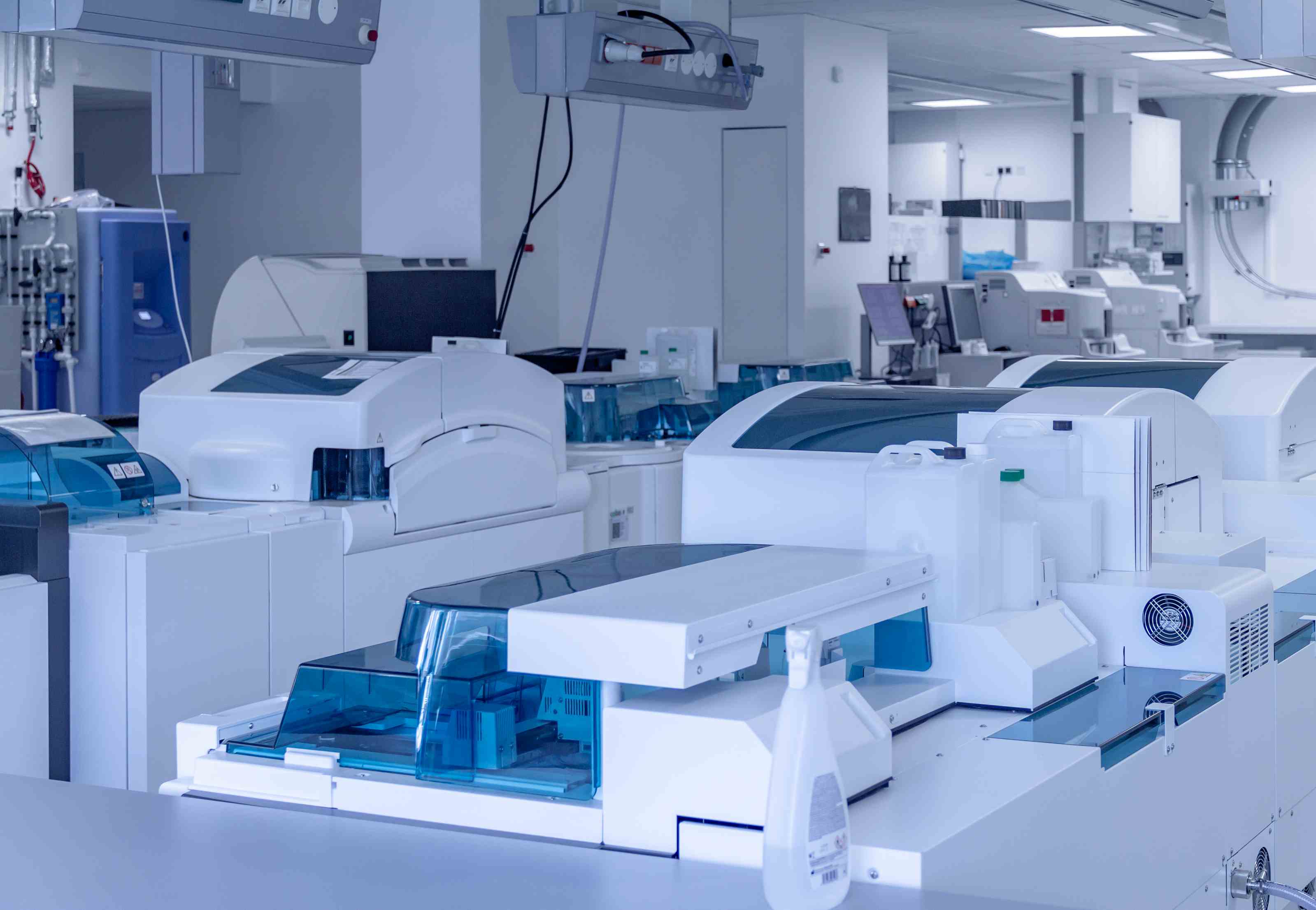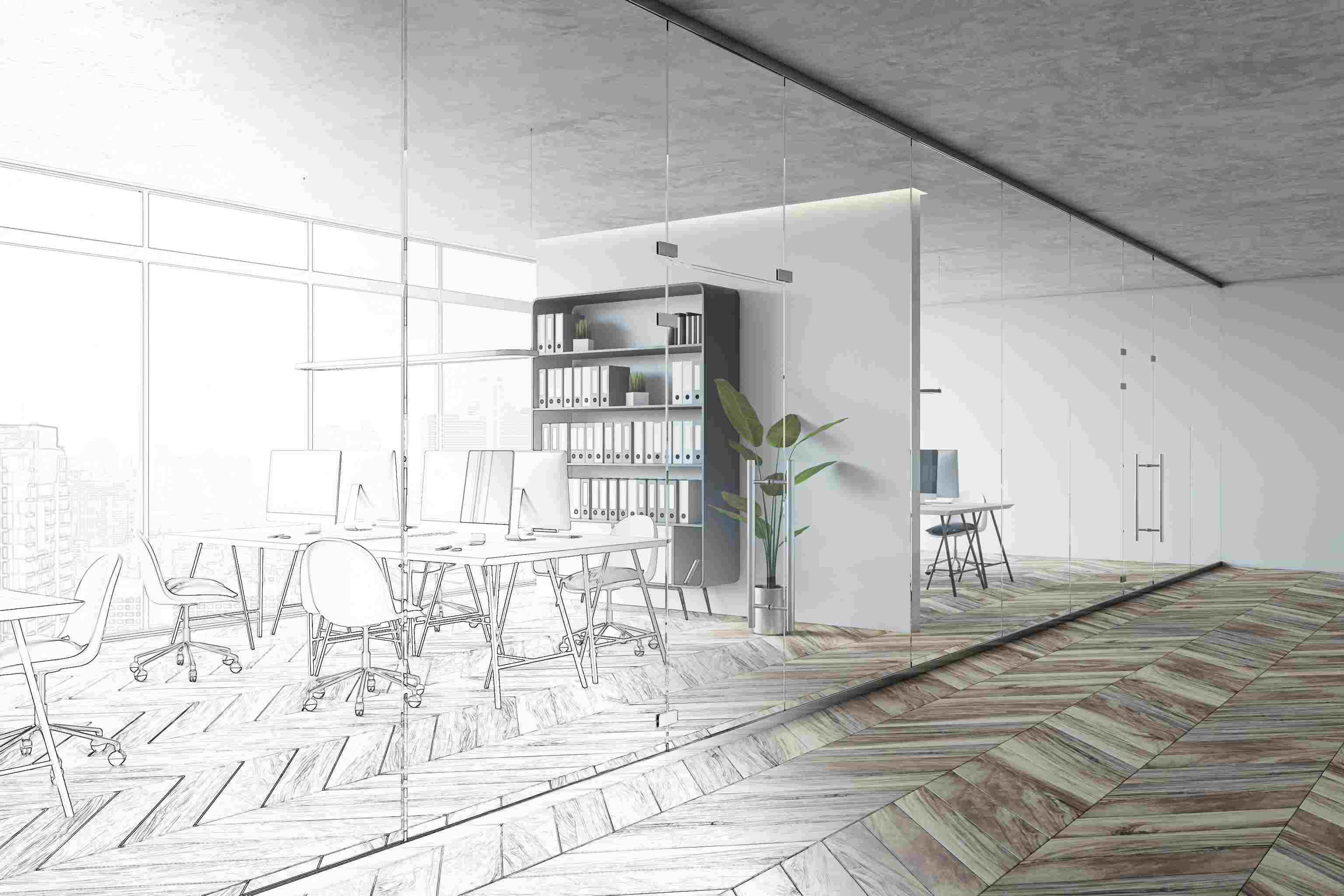Fiber laser cutting represents a paradigm shift in modern metal fabrication. Its adoption is no longer a competitive advantage but a foundational necessity for industries demanding unparalleled precision, high-speed throughput, and material versatility. This technology's ability to deliver a highly focused, high-density energy beam allows for intricate cuts with a minimal heat-affected zone (HAZ), revolutionizing production workflows.
This expert guide provides an in-depth analysis of 10 key industries where fiber laser cutting has become an indispensable technology, outlining their unique characteristics and the critical challenges that this technology solves.

1. Automotive Industry
The automotive sector is a high-volume, cost-sensitive environment relentlessly pursuing lightweighting and structural integrity. Fiber lasers are integral to fabricating Body-in-White (BIW) structures, chassis components, hydroformed parts, and exhaust systems. They excel at processing Advanced High-Strength Steels (AHSS) and aluminum alloys, which are crucial for improving fuel efficiency and safety performance.

Industry Features: High-volume production, stringent quality control (IATF 16949), rapid design cycles, and a diverse mix of materials.
Industry Challenges:
Managing extreme production speeds without compromising cut quality or dimensional accuracy.
- Controlling operational costs amidst fluctuating material prices and intense market competition.
- Achieving consistent, high-quality cuts on reflective materials like aluminum and coated steels.
- Flexibly adapting production lines for frequent model updates and design modifications.
2. Aerospace and Aviation
In aerospace, there is zero tolerance for error. Components must withstand extreme temperatures, pressures, and mechanical stresses. Fiber laser cutting is mission-critical for manufacturing parts from exotic and hard-to-machine materials like titanium alloys, Inconel, and nickel-based superalloys. Applications range from turbine engine components and fuselage panels to complex brackets and structural reinforcements.

Industry Features: Strict regulatory compliance (e.g., AS9100), use of high-performance and expensive materials, low-volume/high-mix production, and an absolute requirement for part traceability and perfection.
Industry Challenges:
Achieving micron-level tolerances and complex geometries on non-ferrous and heat-resistant alloys.
- Minimizing material waste, as raw materials represent a significant portion of the final part cost.
- Ensuring cut-edge integrity with no micro-cracks, burrs, or thermal distortion that could lead to component failure.
- Maintaining process repeatability and documentation for rigorous quality assurance and certification.
3. Medical Device Manufacturing
The medical field demands the highest level of precision and cleanliness. Fiber lasers are used to create life-saving devices where accuracy is measured in microns. This includes manufacturing surgical instruments, cardiovascular stents, orthopedic implants (knee/hip replacements), and diagnostic equipment components from biocompatible materials like 316L stainless steel, titanium, and Nitinol.

Industry Features: Extreme precision, use of biocompatible materials, stringent regulatory standards (FDA, ISO 13485), and the need for sterile, contaminant-free processing.
Industry Challenges:
Producing microscopic features and intricate patterns without creating burrs or slag that could be harmful.
- Maintaining a minimal heat-affected zone (HAZ) to preserve the material's biocompatibility and mechanical properties.
- Ensuring 100% part-to-part consistency for process validation and regulatory approval.
- Working with delicate and thin-walled materials without causing warping or structural damage.
4. Electronics Industry
Miniaturization and performance are the driving forces in electronics. Fiber lasers provide the delicate touch needed for this industry. They are essential for cutting thin metal components like EMI shields for circuit boards, intricate connector parts, metal casings for smartphones and laptops, and stencils for solder paste application. The technology's low thermal input is vital to avoid damaging sensitive electronic components.
Industry Features: High-precision cutting of thin-gauge metals, rapid prototyping and production cycles, and a focus on miniaturization and thermal management.
Industry Challenges:
Preventing thermal distortion or damage to adjacent heat-sensitive components.
- Achieving clean, dross-free cuts on highly reflective materials like copper and brass.
- Mass-producing micro-components with exceptionally tight tolerances.
- Etching permanent, high-resolution serial numbers and QR codes for traceability.
5. Architecture & Interior Design
Modern architecture increasingly incorporates custom metalwork as a central design element. Fiber laser cutting empowers architects and designers to create complex and artistic metal features that were previously unfeasible. This includes decorative panels, intricate facade screens, custom staircases, artistic metal gates, and bespoke light fixtures made from stainless steel, Corten steel, brass, and aluminum.

Industry Features: Project-based work, focus on aesthetics and unique designs, need for flexibility in cutting various metals and thicknesses, and blending artistry with structural function.
Industry Challenges:
Translating complex digital designs (CAD) into precisely fabricated physical parts.
- Achieving a flawless surface finish on visible architectural elements, requiring minimal secondary processing.
- Cost-effectively producing one-off or small-batch custom pieces.
- Handling large-format metal sheets for large-scale installations.
6. Jewelry and Luxury Goods
In the world of jewelry and luxury goods, perfection is paramount. Fiber lasers offer a non-contact, high-fidelity method for cutting and engraving precious metals like gold, silver, and platinum. This technology is ideal for creating intricate filigree designs, custom monograms, precise settings for gemstones, and branding logos on watch components with unmatched detail.
Industry Features: Focus on micro-precision and aesthetic detail, work with high-value materials, need for non-contact processing to avoid tool marks, and demand for customization.
Industry Challenges:
Minimizing material loss (kerf) when cutting expensive precious metals.
- Achieving exceptionally smooth and polished cut edges to reduce finishing labor.
- Engraving fine, high-resolution details on curved or uneven surfaces.
- Ensuring the process does not alter the intrinsic value or appearance of the material.
7. Agriculture and Heavy Equipment
This sector manufactures robust machinery built to withstand harsh environments. Fiber laser cutting is a workhorse technology for fabricating thick steel plates used in tractor frames, harvester components, bulldozer blades, and machine housings. Its speed and reliability are critical for maintaining high throughput in demanding, large-scale production environments.
Industry Features: Fabrication of thick-gauge carbon and high-strength steel, high-volume and repetitive cutting tasks, and a need for durable and reliable parts.
Industry Challenges:
- Efficiently and quickly cutting thick metal plates (often >25mm) without sacrificing edge quality.
- Ensuring consistent accuracy across large batches to guarantee proper fit-up during assembly.
- Reducing the need for secondary grinding or finishing operations to lower labor costs.
- Maximizing uptime and minimizing maintenance in a high-demand production setting.
8. Signage and Advertising
From storefronts to corporate lobbies, custom metal signage conveys a message of quality and permanence. Fiber laser cutters are the go-to tool for this industry, capable of producing everything from large-scale channel letters to intricate logos and decorative elements. The technology's versatility allows for both cutting shapes and etching detailed graphics on a single machine.
Industry Features: High degree of customization, need for aesthetic appeal and brand accuracy, use of various metals (stainless steel, aluminum, brass), and fast turnaround times.
Industry Challenges:
- Reproducing logos and fonts with perfect fidelity to the original design file.
- Achieving sharp, clean corners and smooth curves for a professional finish.
- Efficiently nesting multiple jobs on a single sheet to minimize material scrap.
- Offering both cutting and surface etching capabilities to expand service offerings.
9. Defense and Military
Defense manufacturing requires components that meet uncompromising standards for durability, reliability, and performance. Fiber lasers are used to fabricate parts for armored vehicles, naval ships, aircraft, and advanced weaponry. The technology's precision and ability to cut ballistic-grade steel and other high-strength alloys make it a trusted choice for security-critical applications.
Industry Features: Extreme material toughness, strict adherence to military specifications (Mil-Spec), complete process traceability, and a focus on structural integrity and ballistic performance.
Industry Challenges:
- Cutting hardened and armor-plated materials with precision and minimal metallurgical change.
- Ensuring absolute reliability and repeatability for components where failure is not an option.
- Maintaining security and process control throughout the manufacturing cycle.
- Producing complex assemblies that require precisely interlocking parts.
10. Renewable Energy and Solar
The green economy is built on efficiency, both in energy production and in manufacturing. Fiber lasers are a key enabler for the renewable energy sector. They are used to cut structural frames for solar panels, components for wind turbines, enclosures for battery storage systems, and parts for geothermal equipment, all with the tight tolerances needed to maximize efficiency and minimize waste.

Industry Features: Focus on sustainability and low-waste manufacturing, need for high-precision components to maximize energy efficiency, and rapid growth and innovation.
Industry Challenges:
- Optimizing cutting paths to maximize material utilization (nesting) and reduce scrap.
- Achieving clean cuts that require no post-processing, contributing to a leaner production flow.
- Scaling production quickly and cost-effectively to meet the growing demand for green technology.
- Processing new and advanced materials developed for next-generation energy solutions.
From Challenges to Solutions with Hymson
As demonstrated, each of these top-tier industries faces a unique set of fabrication challenges, from micron-level precision in medical devices to high-speed throughput in the automotive sector. Overcoming these hurdles requires more than just a machine; it demands a strategic partnership with a technology leader that understands these specific application needs.
Hymson excels at translating these industry-specific challenges into tangible manufacturing solutions. With a deep commitment to R&D and a global support network, Hymson provides not just state-of-the-art fiber laser cutting machines but also comprehensive process optimization. By integrating intelligent control systems, customized automation, and expert application support, Hymson empowers manufacturers to reduce waste, accelerate production, and elevate product quality to new heights.
FAQ
1. What is the primary advantage of a fiber laser over a CO2 laser for these industries?
The primary advantage is efficiency and versatility. Fiber lasers have a much higher electrical-to-optical efficiency, reducing operating costs. Their shorter wavelength is better absorbed by metals, especially reflective ones like aluminum and copper, enabling faster and cleaner cuts. They are also solid-state, requiring significantly less maintenance than CO2 lasers.
2. How does laser power (e.g., 6kW vs. 20kW) impact which industry a machine is suited for?
Laser power directly correlates with cutting speed and thickness capacity. Lower power (1-4kW) is often sufficient for thin-gauge applications like electronics and jewelry. Mid-range power (6-12kW) is a versatile choice for automotive and general fabrication. High power (20kW+) is essential for heavy industries like agriculture and defense, where cutting thick steel plates efficiently is the main priority.
3. What kind of maintenance is required for a Hymson fiber laser cutting machine?
Hymson machines are designed for high uptime and low maintenance. Routine maintenance typically includes cleaning the protective lens, checking the chiller water level and filters, and ensuring the nozzle is in good condition. The laser source itself is a solid-state module with a very long service life (often 100,000+ hours) and requires no regular servicing.
4. Can a Hymson laser cutter handle our company's specific proprietary alloy?
Yes, most likely. Hymson's application labs are equipped to test a wide range of materials. Before purchase, we encourage clients to send material samples. Our engineers will conduct cutting tests to determine the optimal parameters (power, speed, assist gas) to achieve your desired quality and efficiency, ensuring the machine is perfectly configured for your unique needs.
Share This Post:

